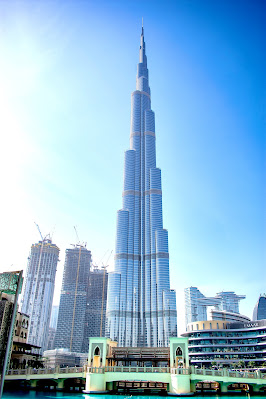Dubai produces rain using drones
Facing a hotter future, dwindling water sources and an exploding population, scientists in one Middle East country are making it rain.
Actually,United Arab Emirates meteorological officials released a video this week of cars driving through a downpour in Ras al Khaimah in the northern part of the country. The storm was the result of one of the UAE’s newest efforts to increase rainfall in a desert nation that gets about four inches a year on average.
Washington, D.C., in contrast, has averaged nearly 45 inches of rain annually for the past decade.
Scientists created rainstorms by launching drones, which then zapped clouds with electricity,the Independent reports. Jolting droplets in the clouds can cause them to clump together, researchers found. The larger raindrops that result then fall to the ground, instead of evaporating midair — which is often the fate of smaller droplets in the UAE, where temperatures are hot and the clouds are high.“What we are trying to do is to make the droplets inside the clouds big enough so that when they fall out of the cloud, they survive down to the surface,” meteorologist and researcher Keri Nicoll told CNN back in May that her team prepared to start testing the drones near Dubai.
Nicoll is part of a team of scientists with the University of Reading in England whose research led to this week’s man-made rainstorms. In 2017, the university’s scientists received $1.5 million for use over three years from the UAE Research Program for Rain Enhancement Science, which has invested in at least nine different research projects over the past five years.
To test their research, Nicoll and her team built four drones with wingspans of about 6½ feet. The drones, which are launched from a catapult, can fly for about 40 minutes, CNN reported. During flight, the drone’s sensors measure temperature, humidity and electrical charge within a cloud, which lets the researchers know when and where they need to make the rains fall.
Water is a big issue in the UAE. The country uses about 4 billion cubic meters of it each year but has access to about 4 percent of that in renewable water resources, according to the CIA. The number of people living in the UAE has skyrocketed in recent years, doubling to 8.3 million between 2005 and 2010, which helps explain why demand for water spiked by a third around that time, according to the government’s 2015 “State of Environment” report. The population kept surging over the next decade and is now 9.9 million.
“The water table is sinking drastically in [the] UAE,” University of Reading professor and meteorologist Maarten Ambaum told BBC news, “and the purpose of this [project] is to try to help with rainfall.”
It usually rains just a few days out of the year in the UAE. During the summer, there’s almost no rainfall. Temperatures there recently topped 125 degrees Fahrenheit.
In recent years, the UAE’s massive push into desalination technology — which transforms seawater into freshwater by removing the salt — has helped close the gap between the demand for water and supply. Most of the UAE’s drinkable water, and 42 percent of all water used in the country, comes from its roughly 70 desalination plants, according to the government of the UAE.
Still, part of the government’s “water security strategy” is to lower demand by 21 percent in the next 15 years.
Ideas to get more water for the UAE have not lacked imagination. In 2016, The Washington Post reports state that government officials were considering building a mountain to create rainfall. As moist air reaches a mountain, it is forced upward, cooling as it rises. The air can then condense and turn into liquid, which falls as rain.
Estimates for another mountain-building project in the Netherlands came in as high as $230 billion.
Other ideas for getting more water to the UAE have included building a pipeline from Pakistan and floating icebergs down from the Arctic.



Informative read
ReplyDeleteBig ups
I'd like a feature where it sends notifications tho for new articles
Thanks so much man
DeleteComing up soon😊
This is hopefully going to be an evolutionary yet expensive change indeed.
ReplyDeleteAmazing read, however more pictures will greatly be appreciated as captures the reader's focus more.
Thanks so much for your response, more will be done towards that💪🏾👏
DeleteKudos to you calkeys, looking forward to more advanced features on your blog
ReplyDeleteThank you so much man, this really means so much bro 💪🏾🥂
Delete